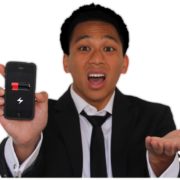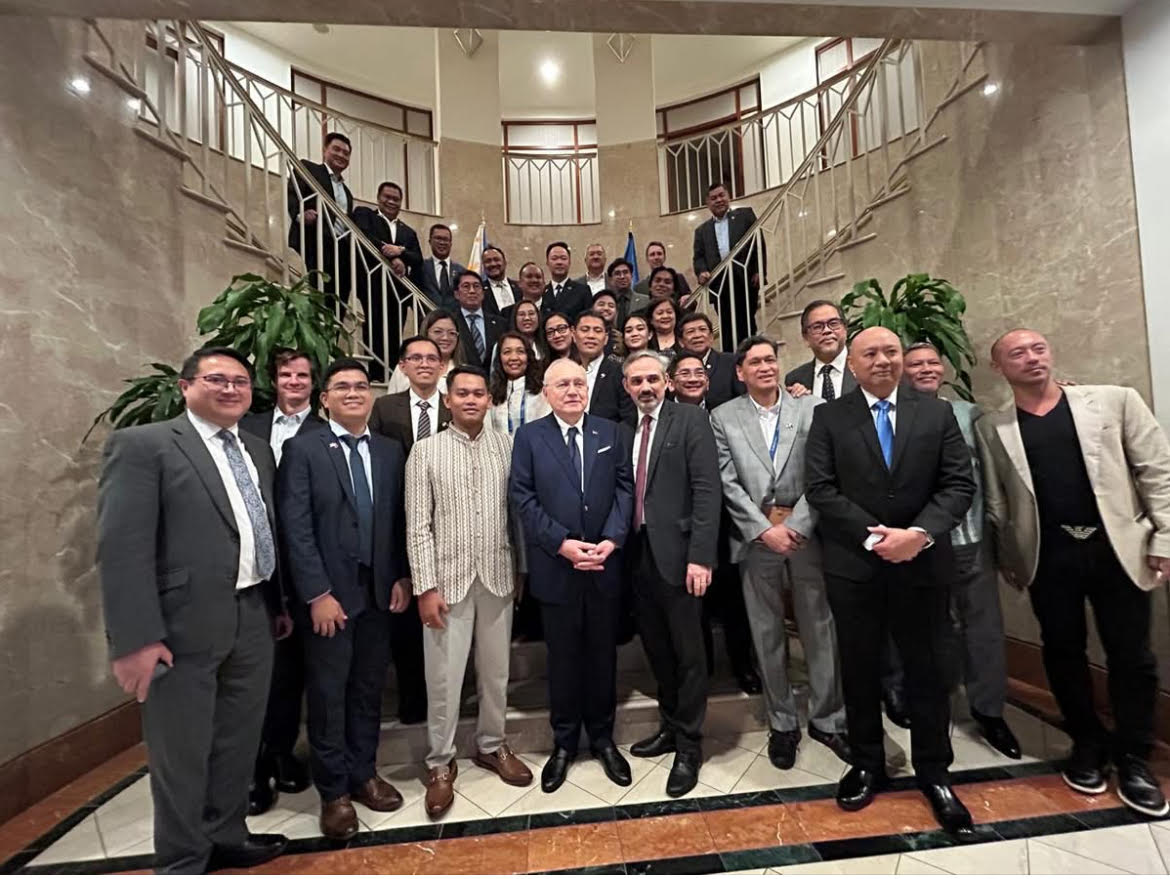IT’S one of the biggest pet peeves in the world.
Imagine traveling for business or leisure and rummaging through your suitcase, only to realize that you’ve forgotten your cell phone charger.
You see the dreaded red light flash on the phone. It’s about to die. You have no clue where the nearest electronic store is.
You could always buy the overinflated priced phone charger from the downstairs lobby, but that’s just another unnecessary expense for your trip.
That scenario is exactly what happened to 28-year-old Fil-Am entrepreneur Jeffrey Maganis, the creator of ChargeAll – a universal charging station and kiosk.
In 2009, he and a group of his friends traveled to the Bay Area. To their dismay, seven of the eight traveling in his party forgot to bring their cell phone charger.
“The worst part was, my friend’s cell phone charger wasn’t compatible with some of our phones. So not all of our phones would get charged,” Maganis laughed.
While most people would search the Internet trying to locate the nearest electronic store and find a cheap replacement, Maganis took it to a different level.
He had a eureka-in-the-bathtub moment.
He searched: “How do you make a cell phone charger?”
“I thought to myself it should be pretty easy to make a charger, right?”
Maganis was no engineer.
He was an economics graduate from the University of California Irvine, and making as much as six figures working as a hedge fund manager for EOS Partners Hedge Fund in New York. Buying a $15 knock off replacement would have been a drop in the bucket for this guy.
But the idea gnawed inside of him. Why didn’t hotels provide phone chargers for their guests? Why aren’t there more locations where you can charge your phone?
ChargeAll was born.
“My idea was to create a product that looked like a mini-octopus,” said Maganis. “I wanted to make a station that had all of the different cords for phones.”
Little did he know then that his idea (which he would later make into a reality) came at a time a mobile cell phone revolution was taking place.
A February 2013 report conducted by the International Telecommunication Union, a Swiss-based UN agency for information and communication technology, revealed that 6.8 billion are cell phone subscribers.
“There are almost as many mobile-cellular subscriptions as people in the world (7.1 billion), with more than half in the Asia-Pacific region (3.5 billion),” the study reveals.
Cell phones have become the new wallet; you can’t leave home without it.
The report further highlights the number of mobile broadband subscribers (cell phones that have Internet access also known as smart phones). In 2007, there were 268 million subscribers. In 2013, there are 2.1 billion. That’s a 40 percent yearly growth in the past five years.
Since those mobile broadband subscribers drain their phones battery faster, that’s also a whole lot of people looking for places to charge their phones.
The problem: no one has created a universal charger. Not all phone chargers are compatible with each other.
The Wall Street Journal, citing a study by the University of Genoa, “found 10 different charger models among the eight major market players.”
This opens up a large aftermarket production of these phone chargers that generates well over $2 billion dollars a year, said Maganis.
Last November, inventor Garold Miller sold 305,000 Halo Pocket Power portable phone charging devices, setting a new QVC network record for most units sold in a day.
Risky business
Starting a business is always a risky venture.
Born in Long Beach, Maganis’ mother is originally from Cabatuan, Isabela; his father from Bangar La Union, Philippines.
Growing up, Maganis said he’s always had an entrepreneurial spirit. He read business magazines like Entrepreneur, Forbes and others.
After graduating UCI, he left for New York and worked as a hedge fund manager.
He was earning a comfortable salary plus bonuses that could easily reach six figures.
However, he felt unsatisfied with his work.
“I just found myself in the corporate life thinking what am I really chasing?,” he said.
“What are people really chasing when they are working for a large corporation?”
So when the idea to create ChargeAll came to mind, he decided to take a risk and work for himself. He called it JCM First Venture.
Maganis’ idea is to create a charging dock that spaghetti out different phone charging cords.
The 5 x 7 inch dock could be used for signage and advertisements. He markets hotels, cafes, and restaurants and it’s up to them whether they want to charge for the service or make it free for their customers.
In the beginning, he was juggling both jobs. He worked from 3am to 3pm.
He’d take a quick nap before meeting with some interns for his own job from 5pm to 10pm.
“I didn’t leave my job until I knew for certain there was demand for the product and people were actually willing to pay for it,” said Maganis.
“Once I started receiving regular orders and interest from customers did I finally quit. It was a matter of actually knowing ChargeAll would be successful.”
Rave reviews
Since starting the business in 2011, ChargeAll has received rave reviews.
Mainstream outlets like KTLA, NBC, Los Angeles Times, KFWB 980 News, Kansas City Business Journal, Orange County Business Journal, and others have featured Maganis’ ChargeAll device.
Major retailers and restaurants – Cheesecake Factory, Buffalo Wild Wings, Hilton hotels, Marriott Resorts, and several universities have purchased their charging station from him.
In 2012, ChargeAll was a Fast Pitch finalist at the annual Tech Coast Angels event in Los Angeles, California.
He’s already working on developing a six-and-a-half-foot charging kiosk similar to an ATM-style debit machine that will have an HD digital video screen to show advertisements, a touch screen and a user interface panel.
Maganis said this is only the beginning for this industry.
People these days are so reliant on their phone for business and personal use, that it’s only a matter of time before every business retailer will have some sort of charging dock, he said.
“Whether my company does it or not, like wireless internet, you’ll see phone chargers everywhere,” he said.
(www.asianjournal.com)
(LA Weekend March 9-12, 2013 Sec. A pg.10)







